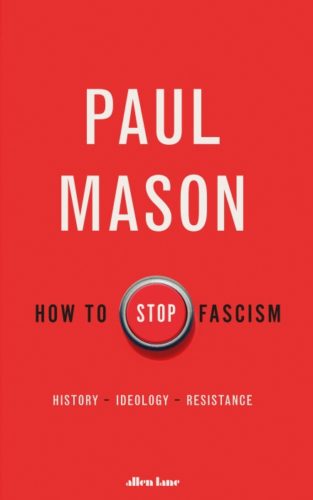
How To Stop Fascism
 In How To Stop Fascism, published August 2021, Paul Mason warns the Capitol Hill riot was no one-off. It is evidence of a global trend: the convergence of right-wing populism with a new kind of fascism.
In How To Stop Fascism, published August 2021, Paul Mason warns the Capitol Hill riot was no one-off. It is evidence of a global trend: the convergence of right-wing populism with a new kind of fascism.
Though the far-right groups number maybe tens of thousands, their thought-patterns are spreading to millions of people, via conspiracy theories like QAnon, through Telegram and Discord channels and through acts of symbolic violence.
Now available in paperback, Kindle, audiobook and hardback. Buy it here.